The Furniture: The Spy Who Loved My Supertanker
 Monday, July 11, 2016 at 11:30AM
Monday, July 11, 2016 at 11:30AM 1977 is our "Year of the Month" for July. So we'll be celebrating its films randomly throughout the month. Here's Daniel Walber...
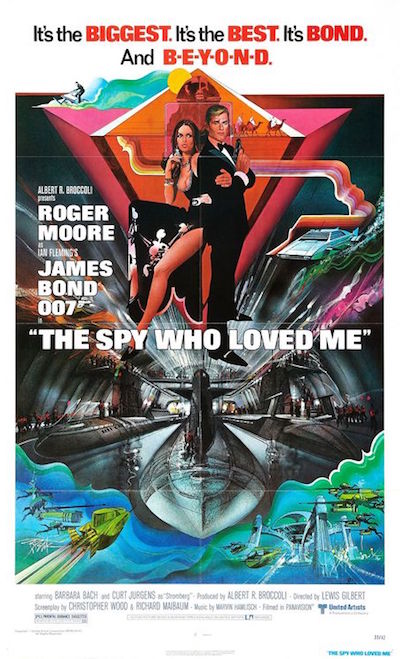 Looking back at the films of '77, the clear production design stand-out is Star Wars. It won the Oscar and changed the world, though not necessarily in that order. Science fiction was crossing over, pushed even further by fellow nominee Close Encounters of the Third Kind. But why talk about harder sci-fi when you could focus on the futuristic gadgetry and technological excess of the James Bond franchise?
Looking back at the films of '77, the clear production design stand-out is Star Wars. It won the Oscar and changed the world, though not necessarily in that order. Science fiction was crossing over, pushed even further by fellow nominee Close Encounters of the Third Kind. But why talk about harder sci-fi when you could focus on the futuristic gadgetry and technological excess of the James Bond franchise?
The Spy Who Loved Me is a remarkable showcase for legendary production designer Ken Adam, who passed away earlier this year. He built models of the Pyramids, a cavernous office for the head of the KGB and a decadent underwater lair for nefarious shipping magnate Karl Stromberg (Curt Jurgens). But the real showstopper is the interior of the Liparus supertanker, the site of the film’s climax. Or, rather, the liveliest of its many climaxes. This is a Bond film, after all.
This was Adam's sixth contribution to the franchise, and he made a point of outdoing his prior work. The set for the Liparus was to be an entirely new sound stage, among the largest ever constructed.
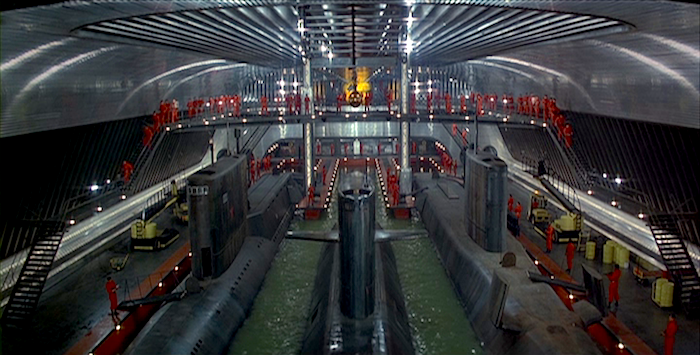
The final product was gigantic, 334ft by 136ft. Cinematographer Claude Renoir couldn’t actually see from one end to the other. Adam had to call in Stanley Kubrick, with whom he had worked on Dr. Strangelove and Barry Lyndon, just to figure out the lighting...
Yet the set's vastness is also its greatest virtue.
The wide view of its entirety is so spectacular that director Lewis Gilbert doesn’t simply offer the audience a single establishing shot, but comes back to it again and again.
This deluge upon the senses reflects Stromberg’s archetypal megalomania. There are three large nuclear submarines and full-size nuclear weapons for each of them. There is also an intimidating multitude of minions in red body suits, filling the space with no real need to explain why they’re all there. The control room is packed with them, sitting on little chairs beneath Stromberg’s own throne and his oversized logo.
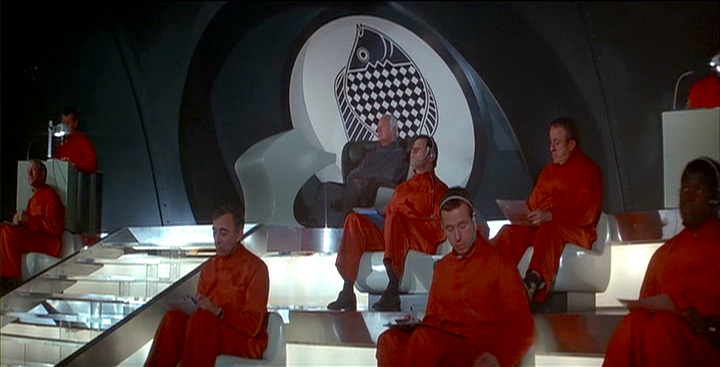
And, of course, there’s a huge globe. You can't be a real supervillain without one.
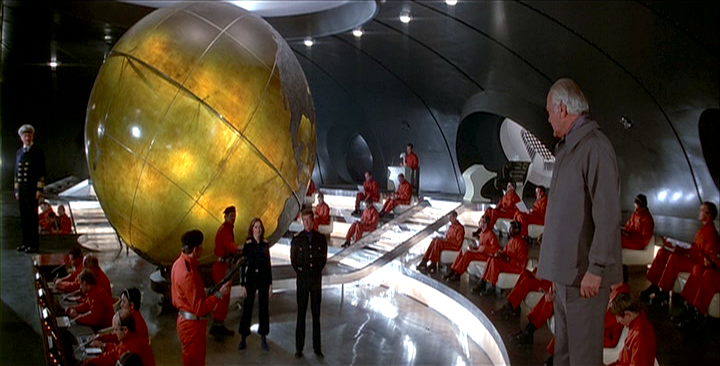
Yet Adam isn’t content to rest on his tremendous laurels. Bond films change location constantly, bouncing from country to country with breakneck speed. Extended sequences in a single confined space can grind everything to a halt if they’re not handled properly. Adam’s dynamic design helps keep things exciting. Bond escapes from his captors and takes a little monorail into the bowels of the ship, as the textures around him shift.
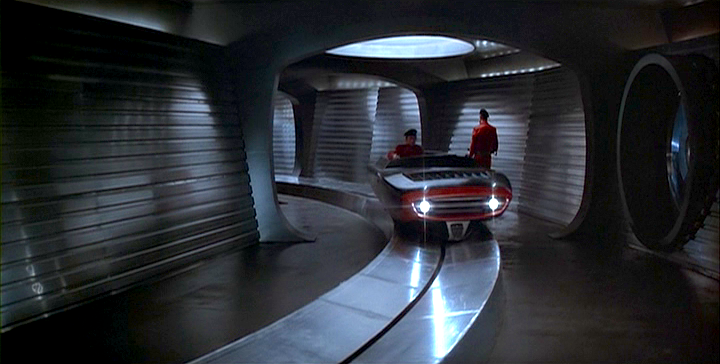
This being Bond, there’s also some silliness. As 007 tries to reprogram the two nuclear submarines, they appear on the golden globe. The fate of the world is at stake, but the only display available involves kitschy little lights on the surface of the Atlantic. It’s high stakes Electronic Battleship (released by Milton Bradley in 1977, incidentally).
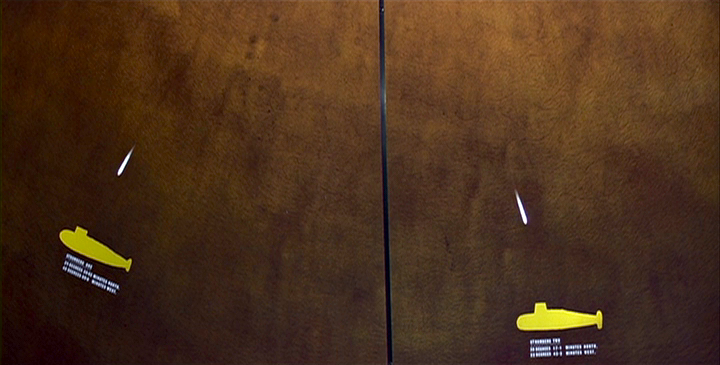
Finally, there’s no better payoff than to see such a gigantic accomplishment catch fire and collapse. The Liparus can’t handle the internal explosions. Once Bond has averted nuclear disaster, he and his American marine companions blast their way out of the ship. We also get to watch it happen from the outside, in the form of impeccable scale models of the supertanker used for the exterior shorts. Thar she blows.
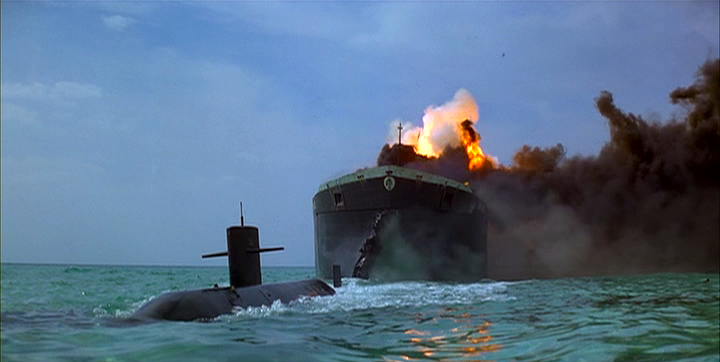
It’s even more spectacular on the inside. The red uniforms of Stromberg’s henchmen have been replaced by a hot orange blaze. The floodlights have given way to darkness. A great set looks its best even in its demise, after all. So sinks one of Adam’s greatest moments, collapsing onto the floor of a sound stage now known as the Albert R. Broccoli 007 Stage. Though if they’re taking suggestions at Pinewood Studios, I think it should probably be renamed the Ken Adam 007 Stage.
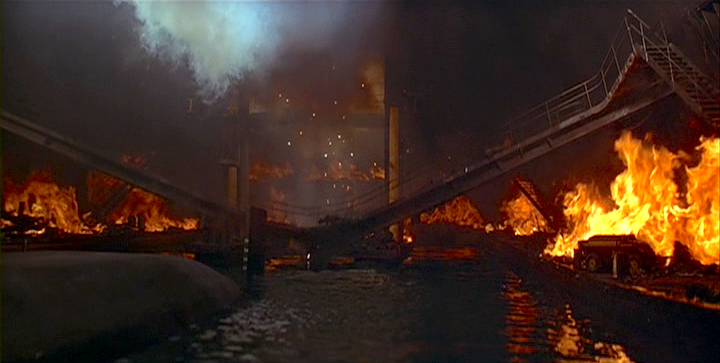
Related Reading:
The Furniture (series index)
More on 007
Goldfinger (with an amazing villain HQ)



Reader Comments (4)
Delighted to see this appreciation of the Liparus set. This is probably my favorite Bond film from the 1970s, in large part due to the production design. Of course one could probably do a whole post on ships in Bond films. The design of the St. Georges a few years later was fun too.
The Best Bond Man Roger Moore Ever.
One of my favourite Bond films, and one of the very best. It's also the only one nominated for its production design. Thanks for this appreciation. Makes me want to rewatch the film for the umpteenth time!
Love this one